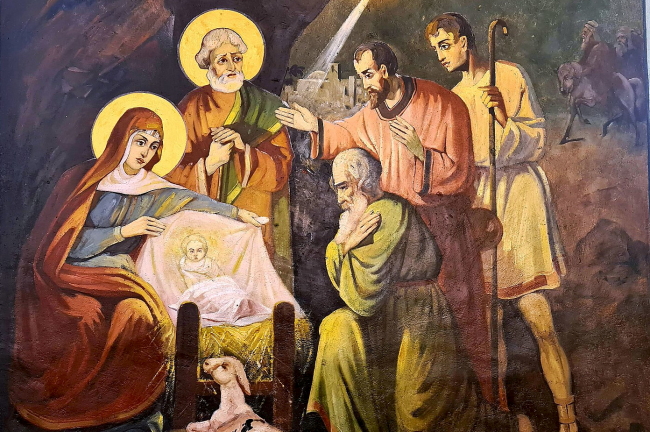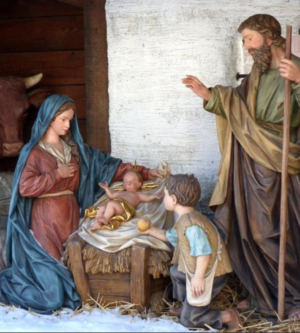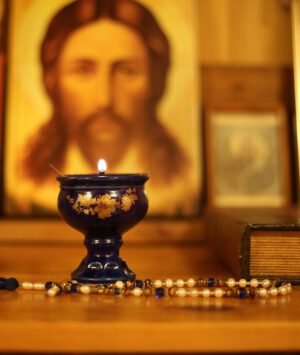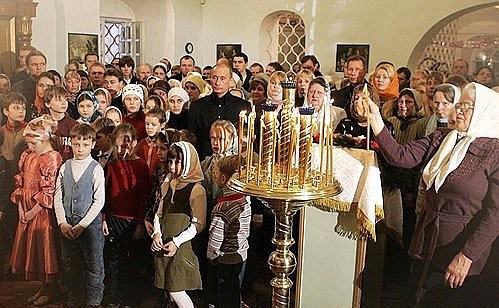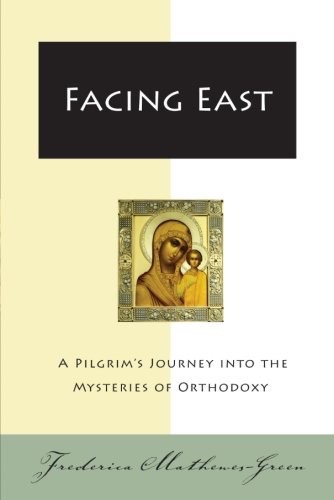MONDAY, NOVEMBER 15: While the American Thanksgiving has not have arrived yet, millions of Orthodox Christians around the world are turning toward the season of Jesus’s birth—which they refer to formally as the Nativity—with, today, the start of the Nativity Fast. For many centuries, Eastern Christians have prepared for the Nativity with a 40-day Nativity Fast.
Note: The variance between starting on (what today is) November 15 and 28 stems from traditional methods of keeping the calendar through many centuries. Some Orthodox church headquarters in the U.S. now list both dates on their websites, because parish leaders know that some families who attend prefer to follow one calendar, while others may follow calendars that match relatives in their countries of origin.
Two periods comprise the Nativity Fast (the dates of which are stated, here, per the Gregorian calendar): Nov. 15-Dec. 19, and Dec. 20-24. December 20 launches the Forefeast of the Nativity, with chanting of Nativity hymns each day through Dec. 24 (Paramony). On Paramony—called Christmas Eve in the Western Christian church—no solid food is consumed until the first star is observed in the evening sky; afterward, the fast is joyously broken. Many then head to the traditional All-Night Vigil, while others attend the Divine Liturgy for the Nativity of Christ on Christmas morning.
Did you know? The Nativity Fast thematically focuses on glorification of the Incarnation of God; the Western Advent focuses on the two comings (or advents) of Jesus.
Traditional Orthodox fasting is no simple task: It means giving up meat and dairy, in addition to fish, wine and oil (fish, wine and oil are, however, permitted on specific days). Yet Orthodox teaching instructs that fasting be undertaken with gladness and in a sense of earnest anticipation—in the promise that these devout preparations will deepen reflections on the moment when God became human. Fasting for Orthodox Christians includes abstinence from foods, negative emotions and greed. Prayer and almsgiving complement the fasting period.
THE PURPOSE OF FASTING: A SYNOPSIS
What is the purpose of fasting, according to the Eastern Orthodox Christian church? Following is pastoral advice from the website of the Antiochian Orthodox archdiocese for America:
The purpose of fasting is to focus on the things that are above, the Kingdom of God. It is a means of putting on virtue in reality, here and now. Through it we are freed from dependence on worldly things. We fast faithfully and in secret, not judging others, and not holding ourselves up as an example.
Fasting in itself is not a means of pleasing God. Fasting is not a punishment for our sins. Nor is fasting a means of suffering and pain to be undertaken as some kind of atonement. Christ already redeemed us on His Cross. Salvation is a gift from God that is not bought by our hunger or thirst.
We fast to be delivered from carnal passions so that God’s gift of Salvation may bear fruit in us. We fast and turn our eyes toward God in His Holy Church. Fasting and prayer go together. Fasting is not irrelevant. Fasting is not obsolete, and it is not something for someone else. Fasting is from God, for us, right here and right now.
PROPHETS AND THE AFTERFEAST
Throughout the Nativity Fast, several key figures are highlighted with feast days—in particular, the prophets who Eastern Christians believe laid the groundwork for the Incarnation: Obadiah, Nahum, Habbakuk, Zephaniah, Haggai, Daniel and the Three Holy Youths. Sundays leading up to Nativity also bring attention to ancestors of the church and righteous men and women who pleased God.
On December 25 (or January 7), the Feast of the Nativity, fasting is forbidden; a fast-free period, or Afterfeast, lasts through January 4—or later, depending on one’s calendar.
